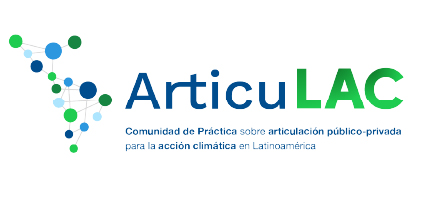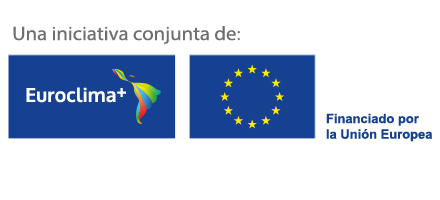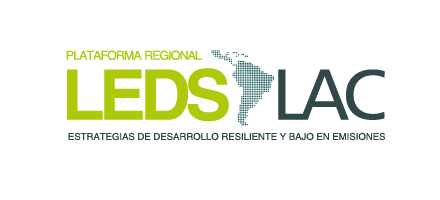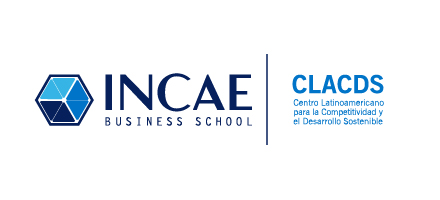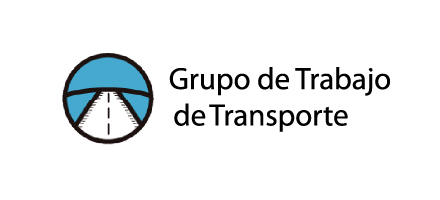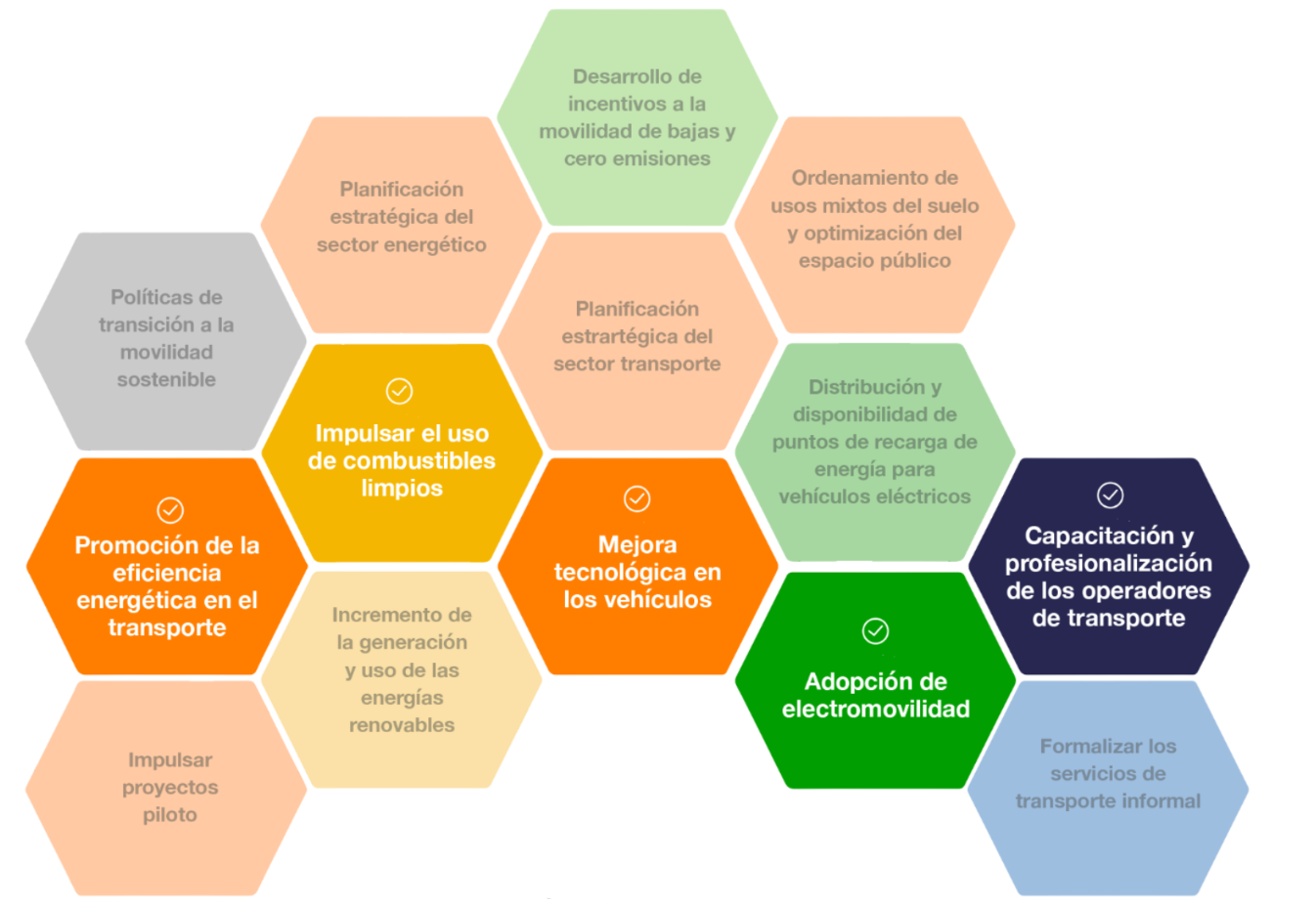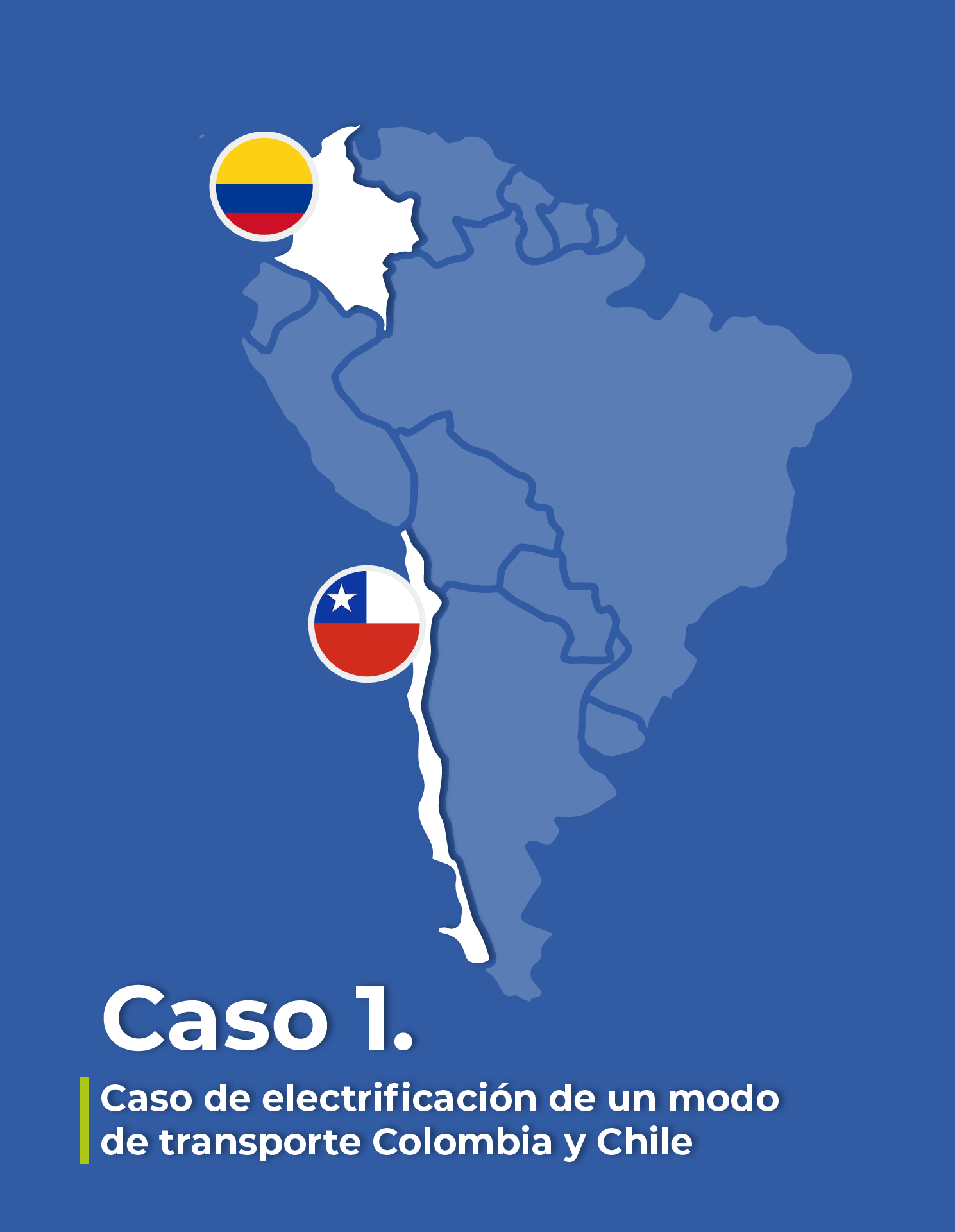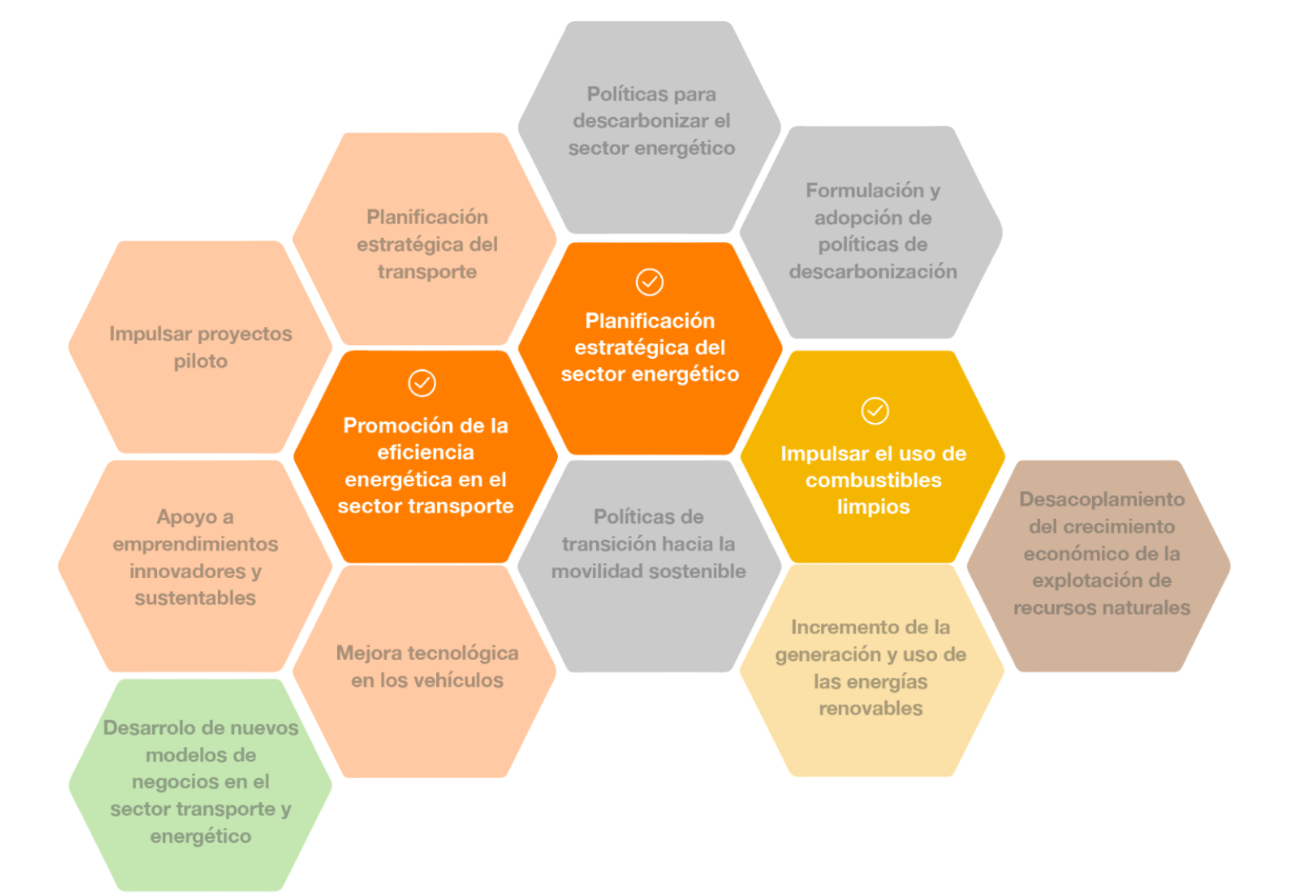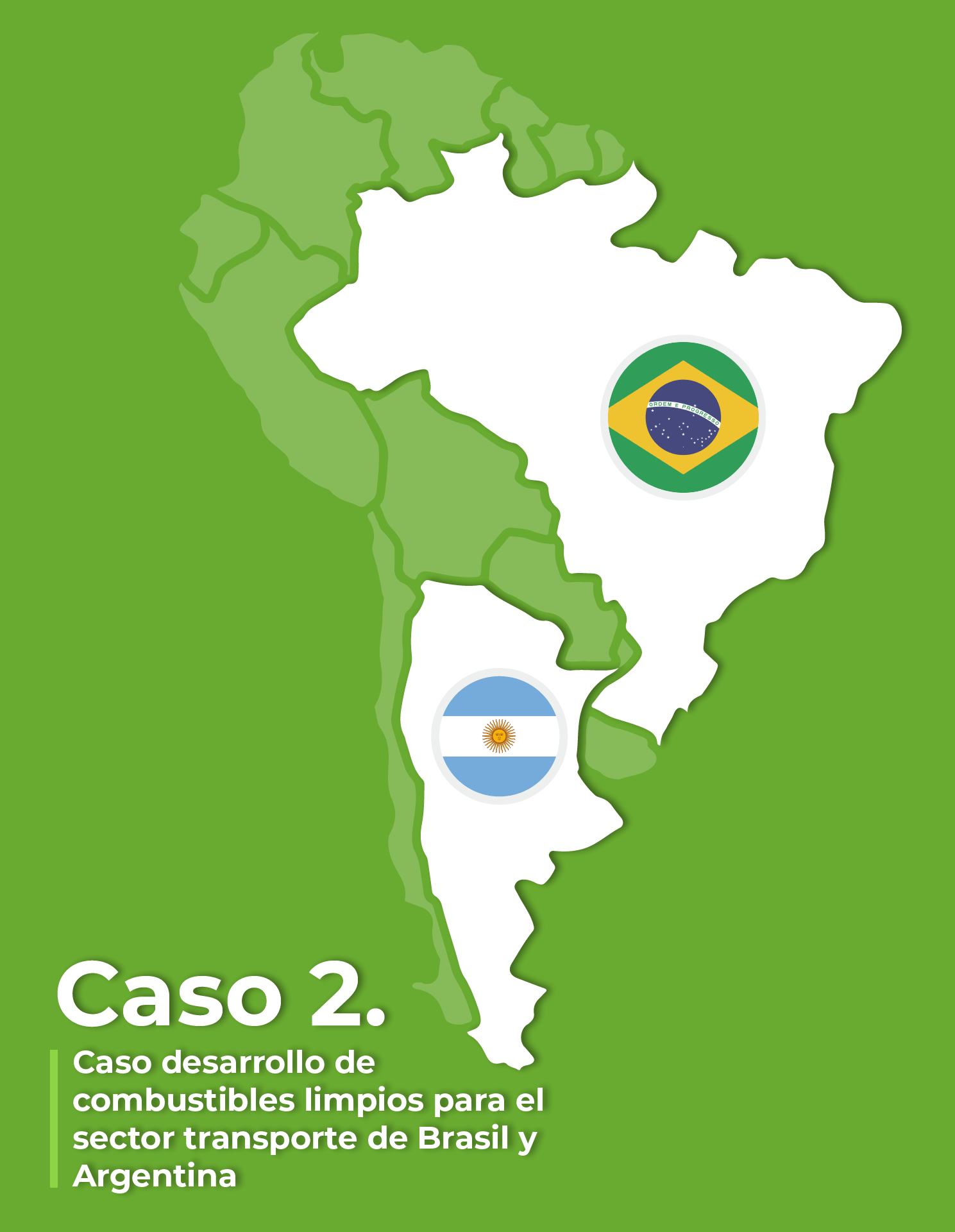LEARN ABOUT THE EXPERIENCE IN CHILE AND COLOMBIA
The examples of the cities of Santiago de Chile and Cali, Colombia, were used. The analysis provides information on the regulatory frameworks developed for each case, as well as the different approaches taken and the roles adopted to generate these frameworks.
In both cases it can be seen how the national public actors, both energy and transport, are jointly involved, mainly assuming the role of formulating the different regulatory frameworks. There is a similarity in terms of the development of a National Electromobility Strategy for both cases. However, it was developed within different regulatory frameworks. In the case of Chile, it is framed within the Long Term Climate Strategies from which a specific Energy Efficiency Law is derived.
In Cali, the actions are part of the Comprehensive Climate Change Management Plan, which includes energy efficiency programs and a law to promote the use of electric vehicles. In both cases, local governments were involved in the formulation and implementation stage.
The private actors detected mostly play a role in implementation and operation, and in the case of Chile, the intervention of these actors is noted in some formulation stages.
